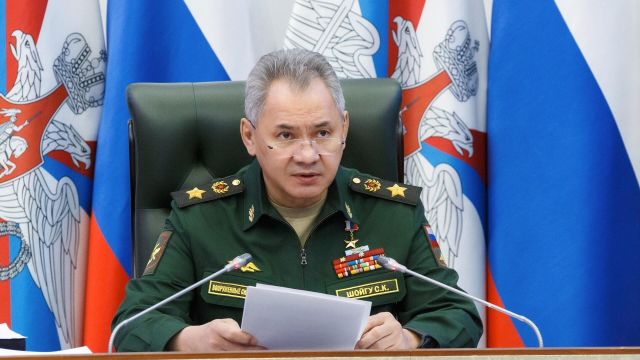All three components of the Russian nuclear triad took part in the training, according to Defense Minister Sergei Shoigu, the military worked out a massive nuclear strike in response to a possible similar attackMOSCOW, October 26.
/tass/. The Russian military conducted a training of strategic deterrence forces on Wednesday, in which they practiced a massive nuclear strike in response to a possible similar attack. According to the Kremlin's press service, all the tasks of the event were completed in full, and all launched missiles reached their targets.
This training was the second since the beginning of the year - the previous one took place on February 19, shortly before the start of a special military operation in Ukraine.
TASS has collected the main information about this event.
Composition of participants
- All three components of the Russian nuclear triad - land, sea and air - took part in the training. The mobile ground complex "Yars" from the Plesetsk cosmodrome in the Arkhangelsk region and the nuclear submarine "Tula" (project 667BDRM) in the Barents Sea fired intercontinental ballistic missiles at the Kura test site in Kamchatka. The air component was represented by two Tu-95MS strategic bombers, which used cruise missiles.
- A similar technique was used in the February exercises, but the launch of the Sineva rocket was then carried out from the Karelia submarine, the same type as the Tula.
- In addition, in February, sea- and land-based cruise missiles Kalibr and Iskander were launched, as well as hypersonic Daggers, the carriers of which are modified MiG-31 aircraft, and Zircons (they are equipped with ships and submarines in the future).
Training goals
- The military, according to Russian Defense Minister Sergei Shoigu, worked out "the tasks of delivering a massive nuclear strike by strategic nuclear forces in response to an enemy nuclear strike."
- The main purpose of the February exercises, as the chief of the General Staff Valery Gerasimov said at the time, was to work out the actions of strategic offensive forces "to inflict a guaranteed defeat on the enemy." They were carried out in two stages: first, the use of weapons of increased potential danger was practiced, and then - the authorization and massive use of nuclear weapons "in a retaliatory strike."
Participation of the President
- On Wednesday, Russian President Vladimir Putin watched the training from the Kremlin's situation center. He received the reports of Shoigu and Gerasimov via video link.
- In February, the head of state was also in the Kremlin, his Belarusian counterpart Alexander Lukashenko watched the exercises with him.
NATO exercises
- The training took place against the backdrop of the annual NATO nuclear forces exercise Steadfast Noon, which this year takes place from October 17 to 30. As part of these maneuvers, the alliance's military is practicing nuclear strikes.
- This year, the headquarters of the exercises is located at the Kleine-Brogel Air Base in Belgium, which is one of the locations of American tactical nuclear weapons in Europe (along with Germany, Italy, the Netherlands and Turkey).
- Up to 60 aircraft from 14 NATO countries, including American B-52 strategic bombers, are involved in the alliance's maneuvers. They are involved over North-Western Europe - Belgium, Great Britain and the North Sea

